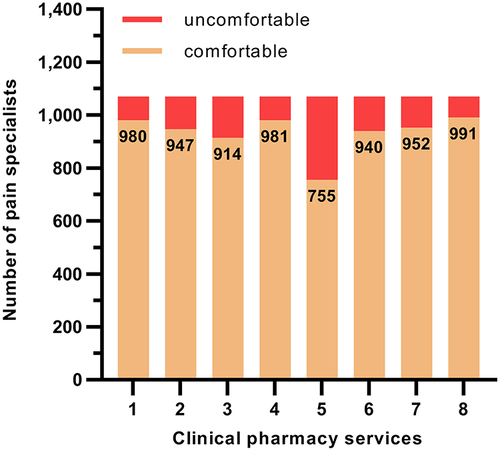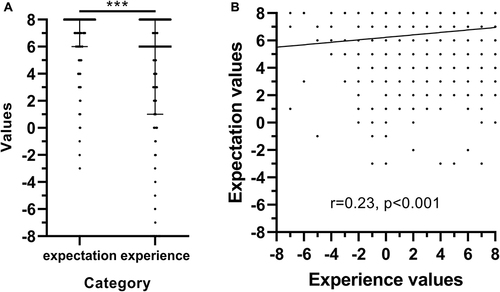Figures & data
Figure 1 Pain physicians’ perceptions about specific kinds of clinical pharmacy services. A significant difference was observed among pain physicians’ attitudes towards specific kinds of clinical pharmacy services. Almost one-third (29.5%) of pain physicians were uncomfortable with pharmacists treating minor illnesses. 1: providing patient education, 2: suggesting use of non-prescription medications, 3: suggesting use of prescription medications to patients, 4: suggesting use of prescription medications to physicians, 5: treating minor illnesses, 6: designing and monitoring therapeutic regimes, 7: monitoring outcomes of therapeutic regimes, 8: detecting and preventing prescription errors.

Table 1 Demographic Information
Table 2 Frequency of Interactions and Their Reasons
Table 3 Pain Physicians’ Expectations of Pharmacists
Table 4 Pain Physicians’ Experiences with Pharmacists
Figure 2 Relationship between pain physicians’ expectations and experiences regarding clinical pharmacy services. The experience values were significantly lower than the expectation values (A) and there was a direct correlation between expectation values and experience values (B). Data are expressed as median (75% interquartile range). ***p < 0.001 vs expectation values.

